Vedha naayagan veda bhushanan
Vedhamae uruvaa yavan;
Kaadhlaai para vaazhvinir kadi
Dhaeri nindru kaLiththavan.
Word meaning
vedham = the four vedas (hindu scriptures Rg, Yajur, Sama and Atharvana); bhushanan = one who wears (something); uru = form, shape; avan = he, him; para vaazhvu = literally, Supreme life; kadidhu = quickly; aeru = climb; kaLi = to enjoy;
Meaning
Our Ramana is the chief of the four vedas, he is the form of the vedas and he wears the vedas as ornaments. Quickly he ascended to the Supreme state (para vaazhvu) where he remains firmly established and enjoys the bliss (of self realisation).
In Aksharamana malai Bhagavan says, “vedanthathe vaer ara viLangum vedha poruL aruL arunachala” [meaning from TRK: In the Upanishads, which come at the end of the Vedas, there are instructions for various sects of people according to their role in the material plane of existence, which implies a nondual nature (teacher and student). When the state that differentiates from the Brahman is destroyed, what remans is the ‘paramartha swarupam’ (form of god/Absolute) which shines as One. That part of the vedas which explicitly explain the self realisation is called upanishads. Since they appear at the end of the vedas (antham is end, Vedanta is at the end of Vedas), these wisdom-sections (gnana kaandam or upanishads) are called Vedantas. This is what Bhagavan points out as ‘vedanthathe vaer Ara vilangum’ - that which shines as not separate from vedanta.
Since it is difficult to understand Vedas without a guru, Bhagavan pleads for Arunachala’s grace to reach that stage (mentioned in the Vedanta].
In Arunachala Nava maNi Malai, verse 2, it is stated that the letters ‘a, ru and Na’ in aruNachala signify, tat vam asi, one of the Vedic mahavakyas meaning You are that.
Tirumular, one of the earliest saints revered in Saiva Sidhantha, says in his work Tirumandiram in Kadavul Vaazthu on Shiva:
ஒன்றவன் தானே இரண்டவன் இன்னருள்
நின்றனன் மூன்றினுள் நான்குணர்ந் தான்ஐந்து
வென்றனன் ஆறு விரிந்தனன் ஏழும்பர்ச்
சென்றனன் தானிருந் தான்உணர்ந் தெட்டே.
Ondravan thaane irandavan innaruL
Nindranan moondrinuL naanguNardhan aindhu
Vendranan aura virindhanan ezhu umbar
Chendranan thaanirundhan thaan uNarndhitte
Meaning
The One is He, the Two His sweet Grace,
In Three He stood, in all the Four witnessed,
The Five He conquered, the Six He filled,
The Seven Worlds pervades, manifests the Eight
And so remains.
Since Bhagavan and Arunachala (who is the veda pour or the meaning of Vedas) are one and the same, here SV compares Bhagavan to the form of Vedas and as ‘One who wears Vedas as ornaments’.
The second part of the verse refers to Bhagavan’s direct self realisation experience when he was just a 16 year old boy. What is said to take lifetimes to achieve, took Bhagavan but a moment. He didn’t even know what that state was called until much later when he was reading about such states in books.
Vedhamae uruvaa yavan;
Kaadhlaai para vaazhvinir kadi
Dhaeri nindru kaLiththavan.
Word meaning
vedham = the four vedas (hindu scriptures Rg, Yajur, Sama and Atharvana); bhushanan = one who wears (something); uru = form, shape; avan = he, him; para vaazhvu = literally, Supreme life; kadidhu = quickly; aeru = climb; kaLi = to enjoy;
Meaning
Our Ramana is the chief of the four vedas, he is the form of the vedas and he wears the vedas as ornaments. Quickly he ascended to the Supreme state (para vaazhvu) where he remains firmly established and enjoys the bliss (of self realisation).
In Aksharamana malai Bhagavan says, “vedanthathe vaer ara viLangum vedha poruL aruL arunachala” [meaning from TRK: In the Upanishads, which come at the end of the Vedas, there are instructions for various sects of people according to their role in the material plane of existence, which implies a nondual nature (teacher and student). When the state that differentiates from the Brahman is destroyed, what remans is the ‘paramartha swarupam’ (form of god/Absolute) which shines as One. That part of the vedas which explicitly explain the self realisation is called upanishads. Since they appear at the end of the vedas (antham is end, Vedanta is at the end of Vedas), these wisdom-sections (gnana kaandam or upanishads) are called Vedantas. This is what Bhagavan points out as ‘vedanthathe vaer Ara vilangum’ - that which shines as not separate from vedanta.
Since it is difficult to understand Vedas without a guru, Bhagavan pleads for Arunachala’s grace to reach that stage (mentioned in the Vedanta].
In Arunachala Nava maNi Malai, verse 2, it is stated that the letters ‘a, ru and Na’ in aruNachala signify, tat vam asi, one of the Vedic mahavakyas meaning You are that.
Tirumular, one of the earliest saints revered in Saiva Sidhantha, says in his work Tirumandiram in Kadavul Vaazthu on Shiva:
ஒன்றவன் தானே இரண்டவன் இன்னருள்
நின்றனன் மூன்றினுள் நான்குணர்ந் தான்ஐந்து
வென்றனன் ஆறு விரிந்தனன் ஏழும்பர்ச்
சென்றனன் தானிருந் தான்உணர்ந் தெட்டே.
Ondravan thaane irandavan innaruL
Nindranan moondrinuL naanguNardhan aindhu
Vendranan aura virindhanan ezhu umbar
Chendranan thaanirundhan thaan uNarndhitte
Meaning
The One is He, the Two His sweet Grace,
In Three He stood, in all the Four witnessed,
The Five He conquered, the Six He filled,
The Seven Worlds pervades, manifests the Eight
And so remains.
Since Bhagavan and Arunachala (who is the veda pour or the meaning of Vedas) are one and the same, here SV compares Bhagavan to the form of Vedas and as ‘One who wears Vedas as ornaments’.
The second part of the verse refers to Bhagavan’s direct self realisation experience when he was just a 16 year old boy. What is said to take lifetimes to achieve, took Bhagavan but a moment. He didn’t even know what that state was called until much later when he was reading about such states in books.

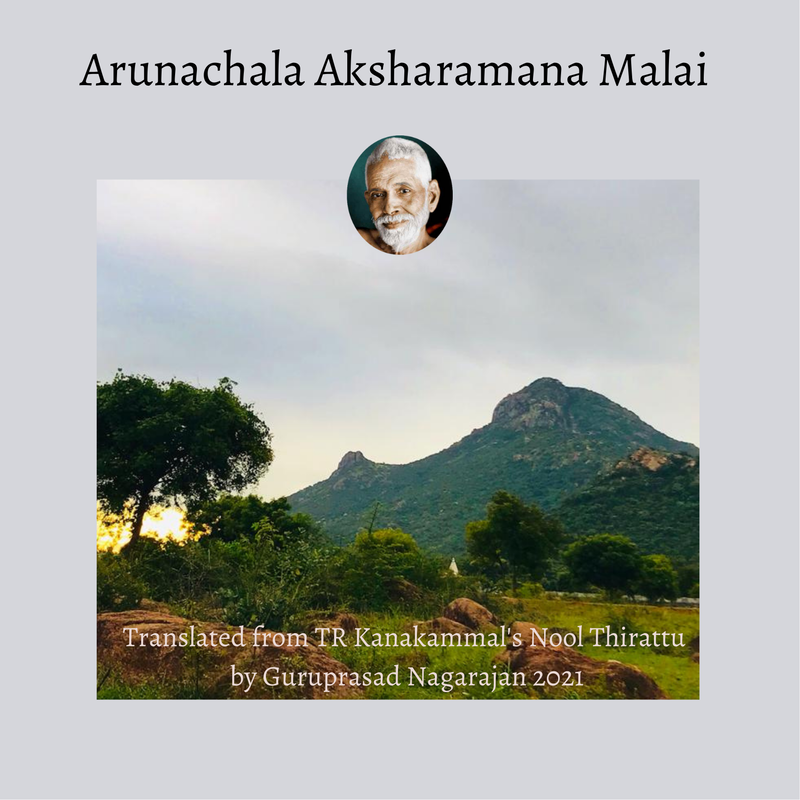
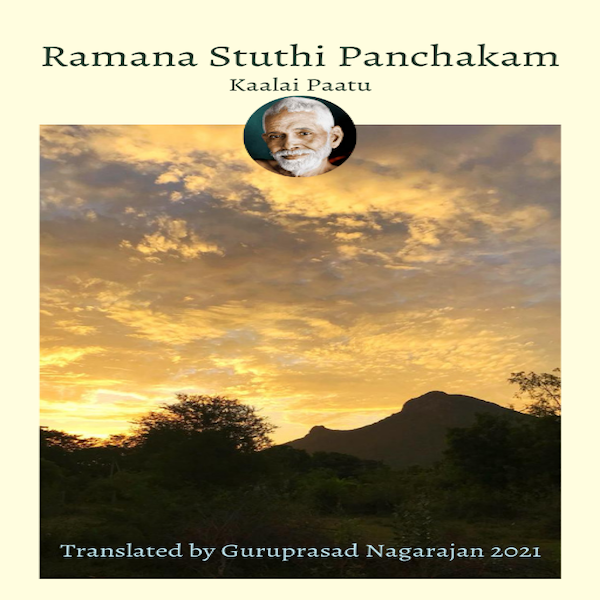
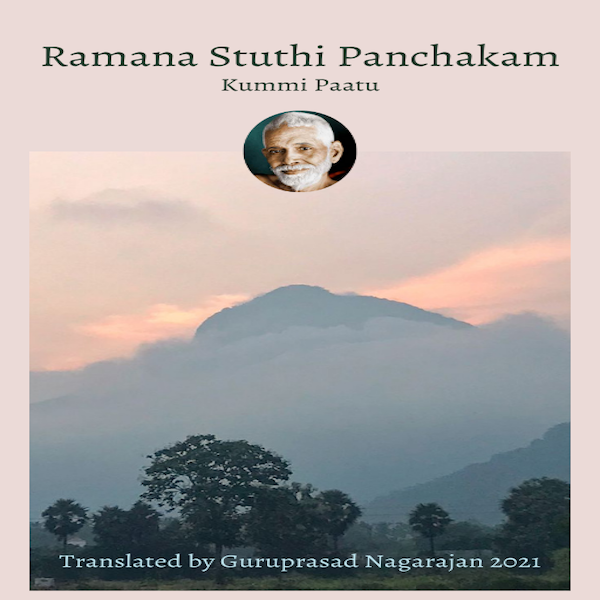
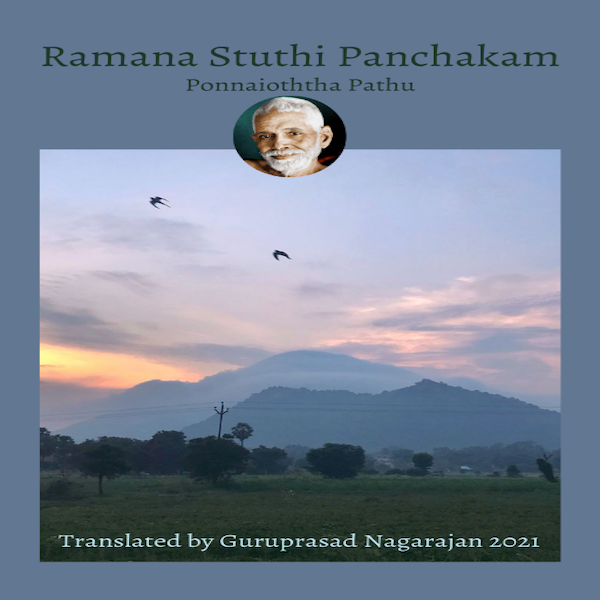
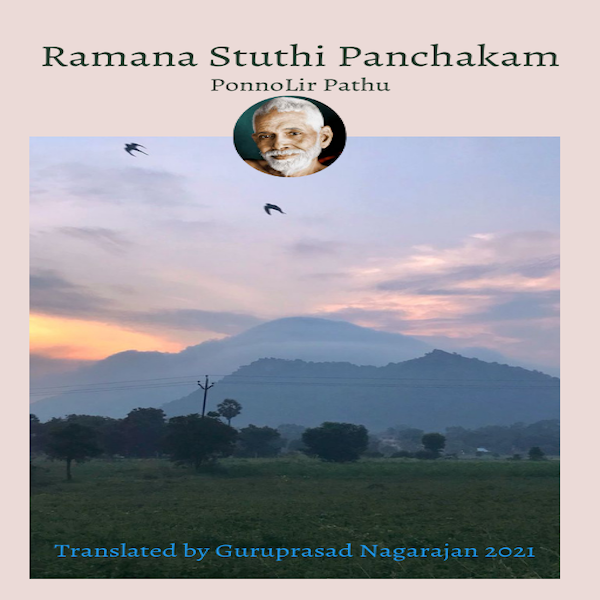
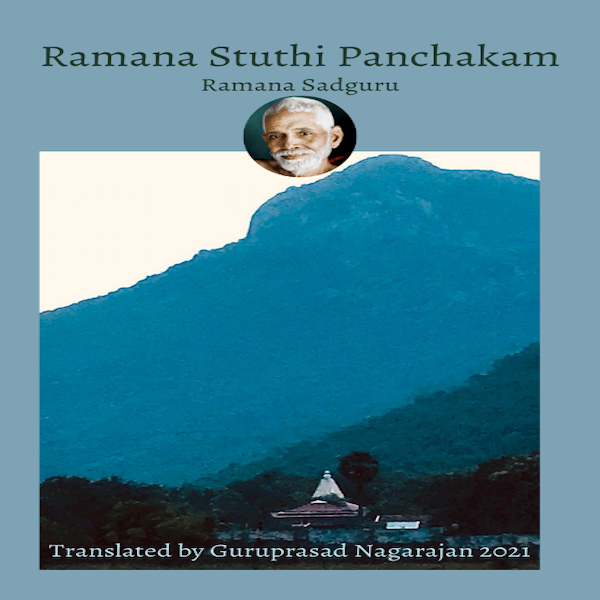
 RSS Feed
RSS Feed